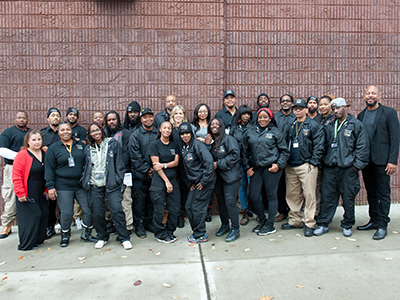Pillar 2: Community-Led Strategies
High risk street intervention is perhaps the most visible piece of a community-centered public safety ecosystem. Many cities across the nation have some form of this program, under a variety of names: violence interrupters, interventions, disrupters. The common ingredient is that they feature outreach workers from the community, many of whom have been in prison and suffered harm from our criminal legal system. They also bring credibility that make them exceptionally effective at de-escalating potentially violent situations.

These are very often extraordinary programs with proven success. But they are most effective when connected to other actors in an ecosystem.
When Newark Mayor Ras Baraka took office in 2014, he brought with him the goal of establishing a community-centered violence reduction organization. He recruited Aqeela Sherrills from California to launch the Newark Community Street Team (NCST). NCST draws upon an evidence-based, trauma-informed approach to violence reduction. Over the years, they have expanded their services. As Solomon Middleton Williams, NCST’s deputy director puts it, they have their “own ecosystem that supports the larger ecosystem of Newark.”
NCST hires, trains, and deploys its workers and interventionists in the South and West Wards of Newark to:
- provide casework to those at greatest risk of becoming a victim or a perpetrator of violence;
- engage in high-risk intervention, both mediating on-going disputes that may result in violence and preventing retaliation;
- offer safe passage to schools for students; and
- provide support to crime survivors who are overlooked by traditional victim services agencies.


